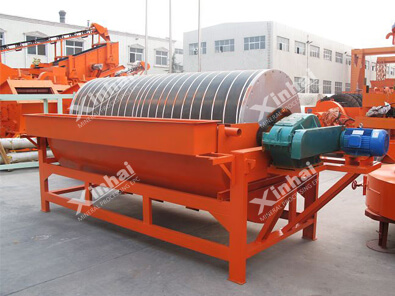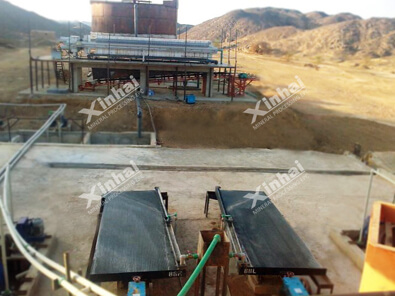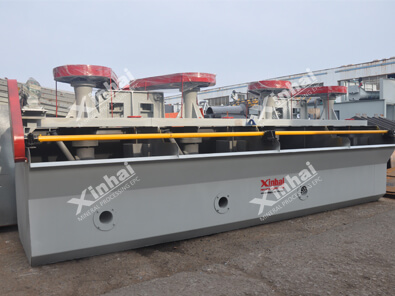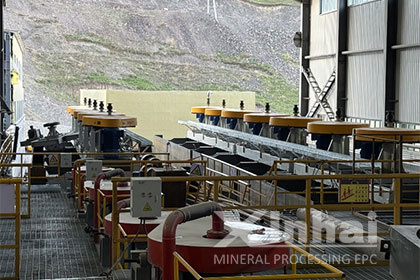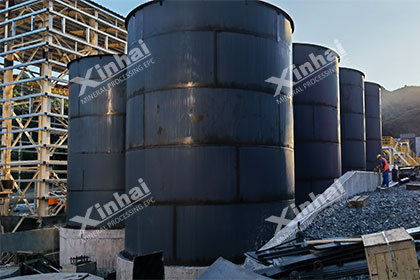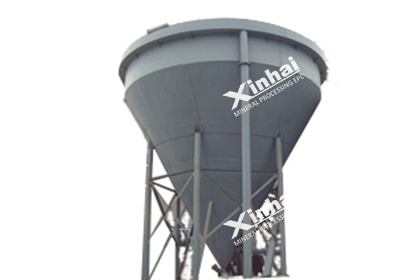The Ultimate Guide of Manganese Benefication
 Essow
Essow
 Oct 13, 2022
Oct 13, 2022
 2176
2176
If you want to know more details about equipment, solutions, etc, please click the button below for free consultation, or leave your requirements!
The vast majority of manganese ore is lean ore, which must be processed by beneficiation.
However, because most manganese ores are fine-grained or micro-fine-grained embedded, and there are a considerable amount of high-phosphate ores, high-iron ores, and common (associated) beneficial metals, it brings great difficulty to beneficiation.
At present, the commonly used manganese beneficiation methods are mechanical beneficiation methods (ore washing, screening, gravity separation, strong magnetic separation, and flotation) and special beneficiation methods (fire enrichment, chemical beneficiation, etc.).
01 Classification of Manganese Ore
BackManganese ore is mainly divided into manganese carbonate and manganese oxide.
1. Manganese Carbonate Ore
The main minerals in manganese carbonate ore are rhodochrosite, calcium rhodochrosite, manganese calcite, and ferromanganese rhodochrosite; gangue minerals include silicate and carbonate minerals, often accompanied by impurities such as sulfur and iron.
The composition of the ore is relatively complex, and the manganese minerals are embedded with a particle size as small as a few microns, which is not easy to dissociate, and it is difficult to obtain a high concentrate grade.
Most of the manganese carbonate ore beneficiation methods are strong magnetic separation, heavy media beneficiation, and flotation. Sedimentary sulfur-bearing manganese carbonate ores generally use flotation processes with the sequential priority of carbonaceous shale, pyrite, and manganese minerals.
The hydrothermal lead-zinc-manganese carbonate ore generally adopts the flotation-strong magnetic separation process.
In some sulfur-containing and manganese-rich ores, manganese minerals are mainly pyrite and generally use the roasting method to remove sulfur.
In the production of some manganese carbonate-rich ore, the roasting method is also used to remove volatile components to obtain finished ore.
Manganese carbonate ore includes some refractory ores. Manganese is closely symbiotic with iron, phosphorus, or gangue, and the embedded particle size is extremely fine. It is difficult to separate, so smelting can be considered.
For example, the manganese-rich slag method for processing high phosphorus and high iron manganese ore, the nitric acid leaching method for producing active manganese dioxide, and the electrolysis method for producing metal manganese have all been used in industrial production. In addition, there are the calcium hydrosulfate method and bacterial leaching method.
2. Manganese Oxide Ore
The manganese minerals in manganese oxide ore are mainly dussault, pyrolusite, hydromanganite, etc. The gangue minerals are mainly silicate minerals, but also carbonate minerals, often accompanied by iron, phosphorus, nickel, cobalt, and other components.
The beneficiation method of manganese oxide ore is mainly gravity separation. The weathered manganese oxide ore often contains a large amount of slime and fine ore, and the ore washing-gravity separation method is used in production.
The clean ore obtained by washing the ore to remove the slime can be used as the finished ore, and some need to be reprocessed by jig and shaking table. Ore washing overflow sometimes needs to be further recovered by gravity separation or strong magnetic separation. Some sedimentary primary manganese oxide ore, due to the depletion of mining, adopts heavy media and jig in production to remove gangue and obtain massive concentrate.
In the iron-bearing manganese oxide ores, the iron minerals are mainly limonite. Iron and manganese are difficult to separate by gravity separation, flotation, or strong magnetic separation, and the reduction roasting magnetic separation method is required. Ore washing-reduction roasting magnetic separation-gravity separation process has been adopted in the industry.
If you want to know more about How to Extract Manganese Ore, please click the link to see details.
02 Manganese Ore Beneficiation Processes
Back1. Washing and Screening
Ore washing is a method of separating the ore and mud from the raw ore under the action of hydraulic, mechanical, and self-friction forces, thus improving the ore grade. The main factors affecting the washing effect are the physical properties of the clay, the type of ore, and the strength and time of mechanical force.
Commonly used ore washing equipment includes a double helical chute ore washing machine, vibrating screen, cylindrical ore washing screen, self-grinding and crushing machine, etc.
Most of the manganese carbonate ores are washed, generally by water spraying from vibrating screens. The product on the screen is washed ore, and the product under the screen is combined with the product on the screen by spiral classification. The overflow is discarded or further recovered for manganese minerals.
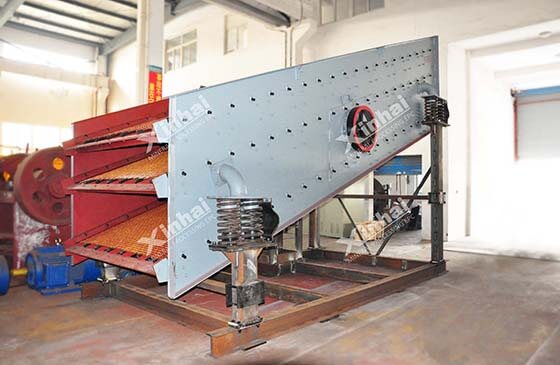
(Round Vibrating Screen for Manganese Washing)
2. Gravity Separation
Gravity separation is carried out according to the density and particle size of various minerals. The shape of the mineral particles also affects the accuracy of sorting by density to some extent.
Commonly used gravity separation equipment for manganese ore beneficiation are jigs (processing coarse and medium-grained manganese ore), shaking tables (processing fine-grained manganese ore) and drum separators, cyclone, vortex cyclones, vibrating chutes, etc.
Since the density of manganese oxide ores such as pyrite, pyrolusite, and limonite is about 4g/cm3, which is significantly different from that of silicate gangue, most of them can use gravity separation.
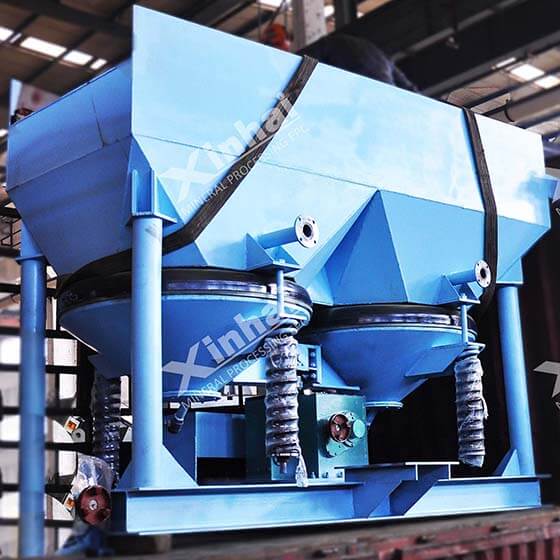
(Jig for Managenese Gravity Separation)
3. Strong Magnetic Separation
Magnetic separation is a method of separating different minerals by utilizing the magnetic differences between minerals in a non-uniform magnetic field. It is easy to operate, pollution-free, and low in production cost. Strong magnetic separation has been applied to weak magnetic manganese ore beneficiation for more than 20 years.
If you want to know more about Magnetic Sepration, please click the link to see details.
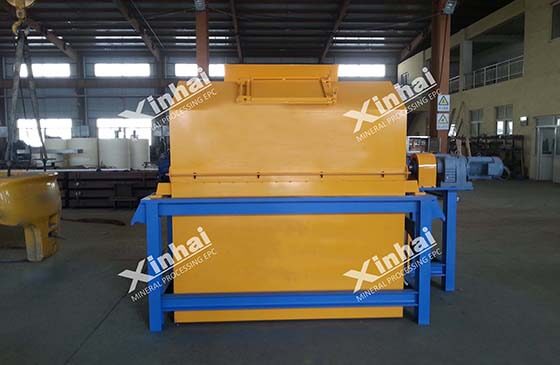
(Magnetic Separator for Manganese Processing)
4. Flotation
Flotation is based on the physical and chemical properties of the mineral surface, in the highly dispersed and basically dissociated mineral suspension, under the action of flotation reagents, one or a part of the minerals can selectively adhere to the bubbles filled in suspension and be floated to the liquid surface. Another part of the minerals remains in the suspension, and the foam on the liquid surface is scraped to achieve the separation of minerals.
Among the manganese minerals, rhodochrosite has the best floatability, followed by pyrolusite and drusen, and other manganese minerals, especially manganese soil, have the worst floatability. Therefore, flotation is only used for a part of the fine-grained rhodochrosite and manganese oxide slimes.
The flotation of manganese ore can use positive flotation and reverse flotation. At present, anion-positive flotation is widely used, and cation reverse flotation is still in the experimental stage.
Since manganese ore is mostly carbonate and oxidized minerals, whose surfaces are easily wetted by water, their flotation performance is poor. In addition, the flotation operating cost is high and the operation is not easy to control, so the flotation method is rarely used in industrial production.
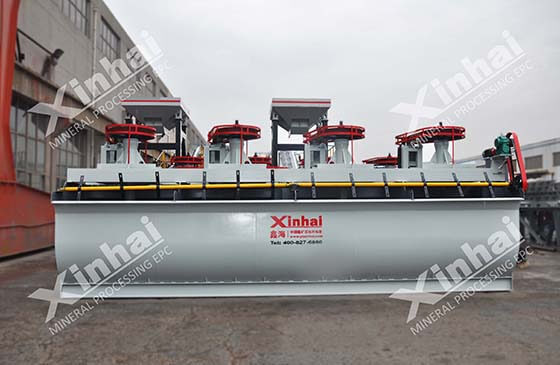
(Flotation Machine for Manganese Flotation)
5. Roasting Magnetic Separation
The roasting of manganese carbonate ore is mainly to remove CO2 volatiles and crystal water to turn it into manganese oxide, thereby improving the grade of manganese.
Manganese oxide ore mainly includes hard manganese ore, black manganese ore, and limonite. Among these minerals, manganese generally exists in the form of high-valence oxides such as MnO2, Mn3O4, and Mn2O3. Among them, the impurity minerals are mainly Fe2O3, a high valence oxide of iron. When manganese oxide ore is reduced, the weak magnetic Fe2O3 in the ore is reduced to magnetic oxides Fe3O4 and r-Fe2O3. The manganese and iron can be separated by using a magnetic separator, which improves the manganese grade of the manganese ore. At the same time, the high-priced manganese oxide in the ore is reduced to MnO, which creates conditions for the treatment of manganese oxide ore by acid leaching.
High-sulfur manganese ore is a metamorphic pyrite-manganese carbonate ore, and the purpose of roasting is to remove carbon dioxide and desulfurize.
Manganese carbonate ore roasting is heating roasting, generally at 1000 °C, and individual at 1150 °C. The components in the ore generally do not melt or agglomerate, but only promote the decomposition of the relevant components.
The roasting temperature of manganese carbonate ore should be controlled at 800~1000℃ in production. If the roasting temperature is too high, it will not only increase fuel consumption and increase the production cost, but more importantly, it will lead to the sintering of the surface of the ore particles, reduce the diffusion rate of CO2 outward and the infiltration rate of O2, and make the roasting effect worse or make the calcined product over-oxidized to reduce the manganese content.
Manganese carbonate ore roasting can use a circular kiln, shaft kiln, and rotary kiln equipment. Circular and shaft kilns are suitable for roasting lump ore. A rotary kiln is suitable for processing fine ore.
6. Dewatering
Manganese ore beneficiation mostly adopts gravity separation or strong magnetic separation, and its coarse-grained manganese concentrate is easy to dehydrate and can be dewatered by natural stockpiling, belt transportation, or a screening machine.
At the same time, whether the fine-grained manganese concentrate comes from sludge treatment or the product from flotation operation, there is an auxiliary process of sedimentation, concentration, and dehydration, which directly affects the recovery rate.
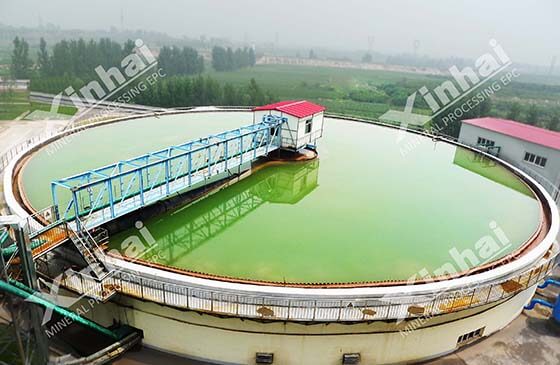
(Thickener for Manganese Dewatering)
7. Comprehensive Utilization of Tailings and Environmental Protection
With the advancement of science and technology and the increasing depletion of resources, the comprehensive utilization of tailings resources has become an important way to improve the economic benefits of mining enterprises. We should maximize the recovery and utilization of valuable elements in tailings, improve the utilization rate of tailings resources, reduce tailings discharge, prolong the service life of tailings ponds, and gradually eliminate the pollution of tailings to the environment.
03To Wrap Up
BackThe above are the manganese beneficiation processes. In actual production, the most suitable process and equipment should be selected according to the composition, nature, and occurrence of useful components of the ore itself.
If you have manganese ore for beneficiation, we can provide you with process design and equipment. Welcome to leave a message on our website, or consult online customer service.
 +86 183 3575 8886
+86 183 3575 8886 pinklaurabao@gmail.com
pinklaurabao@gmail.com




 Message
Message Chat Now
Chat Now


